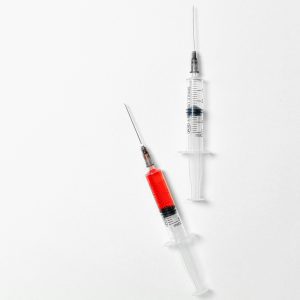
- What Is Cyanosis?
- Brief History of Cyanosis
- What Causes Cyanosis?
- What Are the Symptoms of Cyanosis?
- How is Cyanosis Diagnosed?
- What Are the Different Types of Cyanosis?
- How is Cyanosis Treated?
- Can Cyanosis be Prevented?
- Is Cyanosis Life-Threatening?
- Websites and Articles to Delve into the Aspects of Cyanosis
- Summary
What Is Cyanosis?
Cyanosis is a medical condition characterized by the bluish discoloration of the skin, mucous membranes, and nail beds, resulting from an increased concentration of deoxygenated hemoglobin in the blood. This bluish tint is particularly noticeable in areas where blood vessels are close to the surface, such as the lips and fingertips. The bluish hue is a consequence of reduced oxygen levels in the bloodstream, indicating inadequate oxygenation of tissues.
Cyanosis can be classified into central cyanosis and peripheral cyanosis. Central cyanosis, affecting the core areas of the body, often points to respiratory or cardiovascular issues leading to poor oxygenation of blood. Peripheral cyanosis, on the other hand, involves the extremities and may be a result of reduced blood flow or exposure to cold temperatures.
Various underlying conditions can cause cyanosis, including respiratory diseases, heart disorders, and circulatory issues. Medical evaluation is crucial to identify the root cause and initiate appropriate treatment. Cyanosis serves as a visible indicator of potential oxygenation problems, prompting timely medical attention to address the underlying issues and improve oxygen delivery to tissues.
Brief History of Cyanosis
A comprehensive historical record specifically detailing the recognition and understanding of cyanosis is not readily available. However, historical observations of cyanosis-like symptoms can be traced back to ancient times. Early civilizations, such as the Egyptians, Greeks, and Romans, likely noted the bluish discoloration of the skin and mucous membranes in individuals experiencing respiratory or circulatory difficulties.
Advancements in medical understanding emerged during the Middle Ages, although the concept of cyanosis may not have been explicitly described. In the 17th century, notable figures like William Harvey made groundbreaking contributions to the understanding of blood circulation, laying a foundation for comprehending conditions related to oxygenation.
The recognition and differentiation of various medical conditions associated with cyanosis gained momentum in the 19th and 20th centuries. The development of diagnostic tools, including the stethoscope and pulse oximeter, enhanced physicians’ ability to assess oxygen levels and pinpoint the causes of cyanosis.
Contemporary medicine continues to build upon this historical context, with ongoing research aimed at refining our understanding of cyanosis and improving diagnostic and treatment approaches. While a detailed historical timeline is challenging to construct, the evolution of knowledge surrounding cyanosis reflects the broader advancements in medical science over the centuries.
A simplified table highlighting key points in the recognition and understanding of cyanosis throughout history is given below:
| Time Period | Observations and Advancements |
|---|---|
| Ancient Civilizations | Egyptians, Greeks, and Romans likely noted cyanosis-like symptoms in individuals with respiratory or circulatory difficulties. |
| Middle Ages | Advancements in medical understanding, although the concept of cyanosis may not have been explicitly described. |
| 17th Century | William Harvey and others contribute to the understanding of blood circulation, laying a foundation for comprehending conditions related to oxygenation. |
| 19th and 20th Centuries | Recognition and differentiation of various medical conditions associated with cyanosis gain momentum. Development of diagnostic tools, such as the stethoscope and pulse oximeter, enhances assessment of oxygen levels. |
| Contemporary Medicine | Ongoing research aims at refining our understanding of cyanosis and improving diagnostic and treatment approaches. |
Please note that the information provided is a general overview, and specific dates and details may not be available due to the historical nature of the topic.
What Causes Cyanosis?
Cyanosis is a bluish discoloration of the skin, mucous membranes, and nails due to an increased concentration of deoxygenated hemoglobin in the blood. It occurs when tissues near the surface of the skin have a reduced amount of oxygen.
There are two main types of cyanosis: central cyanosis and peripheral cyanosis. The causes of each type differ:
- Central Cyanosis:
- Respiratory Causes: Conditions that affect the lungs and respiratory system can lead to central cyanosis. Examples include pneumonia, asthma, chronic obstructive pulmonary disease (COPD), and other respiratory disorders that hinder oxygen exchange in the lungs.
- Cardiac Causes: Heart-related issues can also result in central cyanosis. Congenital heart defects, heart failure, and other cardiovascular conditions can lead to insufficient oxygenation of blood.
- Peripheral Cyanosis:
- Circulatory Causes: Disorders affecting the circulation of blood in the peripheral blood vessels can cause peripheral cyanosis. Examples include peripheral artery disease (PAD) or Raynaud’s disease, where blood flow to the extremities is compromised.
- Temperature-Related Causes: Exposure to cold temperatures can cause vasoconstriction, reducing blood flow to the extremities and resulting in peripheral cyanosis.
It’s important to note that cyanosis is a clinical sign rather than a specific diagnosis. Identifying the underlying cause of cyanosis requires a thorough medical evaluation, including a physical examination, medical history, and potentially diagnostic tests such as blood gas analysis, imaging studies, and cardiac assessments.
Prompt medical attention is essential when cyanosis is observed, as it may indicate a serious underlying health issue that requires intervention and treatment.
What Are the Symptoms of Cyanosis?
Cyanosis itself is a symptom characterized by a bluish discoloration of the skin, mucous membranes, and nails due to decreased oxygen levels in the blood. However, it’s important to recognize that cyanosis is a sign of an underlying problem rather than a standalone condition. The symptoms associated with cyanosis vary depending on the specific cause and the affected organ systems. Here are some common symptoms that may accompany cyanosis based on its underlying causes:
- Respiratory Symptoms (Central Cyanosis):
- Shortness of breath
- Rapid breathing
- Wheezing or other abnormal respiratory sounds
- Coughing
- Chest pain or discomfort
- Cardiovascular Symptoms (Central Cyanosis):
- Rapid or irregular heartbeat
- Fatigue
- Swelling (edema) in the extremities or other parts of the body
- Circulatory Symptoms (Peripheral Cyanosis):
- Cold or numb extremities
- Pain or discomfort in the affected limbs
- Weakness or fatigue
- Other Associated Symptoms:
- Dizziness or lightheadedness
- Confusion
- Fainting (syncope)
It’s crucial to seek medical attention promptly if cyanosis is observed, especially if it is accompanied by other concerning symptoms. Cyanosis can indicate a severe lack of oxygen in the body, and identifying the underlying cause is essential for appropriate treatment.
Medical professionals will conduct a thorough evaluation, including assessing vital signs, conducting a physical examination, and performing diagnostic tests to determine the cause of cyanosis and develop an appropriate treatment plan. The underlying condition, whether respiratory, cardiovascular, or circulatory, will dictate the specific symptoms and severity experienced by an individual.
How is Cyanosis Diagnosed?
Diagnosing cyanosis involves a comprehensive evaluation by healthcare professionals to identify the underlying cause. The diagnostic process may include the following steps:
- Clinical Examination:
- Physical Examination: Healthcare providers will conduct a thorough physical examination, paying attention to the skin color, mucous membranes, and nail beds. They will also assess vital signs, including heart rate, respiratory rate, and blood pressure.
- History Taking: Gathering information about the patient’s medical history, including any pre-existing conditions, recent illnesses, exposure to environmental factors, and medication use.
- Diagnostic Tests:
- Blood Gas Analysis: A blood sample may be taken to measure the levels of oxygen and carbon dioxide in the arterial blood. This test provides valuable information about the efficiency of respiratory and circulatory systems in oxygenating the blood.
- Imaging Studies: Chest X-rays or other imaging studies may be performed to assess the condition of the lungs, heart, and blood vessels. This can help identify abnormalities that may contribute to cyanosis.
- Electrocardiogram (ECG or EKG): This test measures the electrical activity of the heart and helps identify any cardiac abnormalities that may be causing cyanosis.
- Pulse Oximetry: A non-invasive test that measures the oxygen saturation of the blood. It involves placing a sensor on a finger or earlobe to estimate the percentage of oxygen in the blood.
- Additional Laboratory Tests:
- Blood tests may be conducted to evaluate the overall health of the patient, assess organ function, and identify any abnormalities that may contribute to cyanosis.
- Specialized Tests:
- Depending on the suspected underlying cause, additional specialized tests may be ordered. For example, echocardiography may be performed to assess the structure and function of the heart.
- Consultation with Specialists:
- In some cases, consultation with specialists such as pulmonologists, cardiologists, or hematologists may be necessary to further investigate and manage specific aspects of the condition.
Once the underlying cause of cyanosis is identified, healthcare providers can develop a targeted treatment plan to address the root issue and improve oxygenation. Prompt diagnosis and intervention are crucial, as cyanosis often indicates a serious medical condition that requires timely medical attention.
Cyanosis is a clinical sign characterized by a bluish discoloration of the skin, mucous membranes, and nails, indicating decreased oxygen levels in the blood or impaired circulation. It can be classified into central cyanosis, associated with respiratory or cardiac issues, and peripheral cyanosis, linked to circulatory problems or exposure to cold. Ancient civilizations likely observed cyanosis-like symptoms, but medical understanding advanced significantly in the 17th century with contributions from figures like William Harvey.
Diagnosis involves clinical examination, blood gas analysis, imaging studies, and specialized tests, with treatment aimed at addressing the underlying cause. Respiratory support, cardiovascular interventions, circulatory support, and lifestyle modifications are common approaches. Central cyanosis may require oxygen therapy or surgical interventions, while peripheral cyanosis may involve managing circulatory disorders. Methemoglobinemia-induced cyanosis is treated by addressing the causative factors. Prevention focuses on maintaining overall health, avoiding smoking, managing chronic conditions, monitoring medications, protecting against infections, and staying warm in cold environments.
Cyanosis severity varies, with mild cases being transient and associated with less severe conditions. However, moderate to severe cyanosis, especially in acute situations, can be life-threatening, necessitating prompt medical attention and interventions to stabilize oxygen levels and address the underlying issues. Early detection, diagnosis, and targeted treatment are crucial for managing cyanosis effectively.
What Are the Different Types of Cyanosis?
Cyanosis can be classified into different types based on its underlying causes and clinical manifestations. The two main types are central cyanosis and peripheral cyanosis. Here’s an overview of each:
- Central Cyanosis:
- Definition: Central cyanosis is characterized by a bluish discoloration of the skin and mucous membranes in areas with high blood flow, such as the lips and tongue. It is indicative of decreased oxygen saturation in the arterial blood.
- Causes: Central cyanosis is often associated with conditions that affect the respiratory or cardiovascular systems. Examples include lung diseases, congenital heart defects, and respiratory failure.
- Peripheral Cyanosis:
- Definition: Peripheral cyanosis involves bluish discoloration of the extremities, such as the fingers, toes, and nail beds. It occurs when there is reduced oxygen supply to the peripheral tissues.
- Causes: Peripheral cyanosis can be associated with conditions that lead to poor blood circulation or decreased oxygen delivery to the tissues. Examples include cold exposure, peripheral vascular disease, and shock.
It’s important to recognize that cyanosis is a symptom rather than a specific disease. The underlying conditions causing cyanosis can vary widely, and a thorough medical evaluation is necessary to identify the precise cause. Some conditions may present with a combination of central and peripheral cyanosis.
Additionally, the severity of cyanosis can vary, ranging from subtle discoloration to a more pronounced and easily observable blue or purple tint. The diagnosis and management of cyanosis require a comprehensive assessment by healthcare professionals, including physical examination, medical history, and diagnostic tests such as blood gas analysis and imaging studies. Early identification and intervention are crucial for addressing the underlying causes of cyanosis and optimizing patient outcomes.
How is Cyanosis Treated?
The treatment of cyanosis involves addressing the underlying cause to improve oxygenation and blood circulation. The specific approach to treatment will depend on whether the cyanosis is central or peripheral and the identified cause. Here are general considerations:
- Respiratory Support (Central Cyanosis):
- Oxygen Therapy: Administration of supplemental oxygen to increase oxygen levels in the blood, especially in cases of respiratory disorders or inadequate gas exchange in the lungs.
- Cardiovascular Interventions (Central Cyanosis):
- Medications: Depending on the underlying cardiac condition, medications such as diuretics, beta-blockers, or medications to improve heart function may be prescribed.
- Surgical Interventions: In some cases, surgical procedures may be required to repair congenital heart defects or address other structural issues.
- Circulatory Support (Peripheral Cyanosis):
- Addressing Circulatory Disorders: Treatment of conditions affecting blood circulation, such as peripheral artery disease (PAD) or Raynaud’s disease, may involve medications, lifestyle modifications, or, in severe cases, surgical interventions.
- Warming the affected areas: In cases of temperature-related peripheral cyanosis, keeping the affected areas warm can help improve blood flow and alleviate symptoms.
- Treatment of Underlying Conditions:
- Identifying and treating the specific underlying conditions contributing to cyanosis is crucial. This may involve antimicrobial therapy for infections, bronchodilators for respiratory conditions, or medications to address other contributing factors.
- Management of Methemoglobinemia:
- If cyanosis is caused by methemoglobinemia, treatment may include discontinuing the use of causative medications, administering methylene blue, or other specific interventions.
- Lifestyle Modifications:
- Encouraging lifestyle changes, such as smoking cessation, maintaining a healthy weight, and regular exercise, may be recommended to improve overall cardiovascular health.
- Monitoring and Follow-Up:
- Regular monitoring of oxygen saturation levels, clinical symptoms, and follow-up appointments with healthcare providers are essential to assess the effectiveness of treatment and make adjustments as needed.
It is crucial for individuals experiencing cyanosis or any associated symptoms to seek prompt medical attention. Cyanosis is a sign of an underlying health problem that requires thorough evaluation and targeted intervention. The treatment plan will be tailored to the specific diagnosis and may involve a multidisciplinary approach, with input from respiratory therapists, cardiologists, pulmonologists, and other specialists as needed.
Can Cyanosis be Prevented?
Preventing cyanosis involves addressing and managing the underlying conditions that can lead to reduced oxygen levels in the blood or impaired circulation. While some causes of cyanosis may be preventable, others may be related to genetic factors or conditions that are not entirely avoidable. Here are some general measures to help prevent cyanosis:
- Maintain Overall Health:
- Adopt a healthy lifestyle that includes regular exercise, a balanced diet, and weight management to support cardiovascular health.
- Avoid Smoking:
- Smoking can contribute to respiratory and cardiovascular problems, which may increase the risk of cyanosis. Quitting smoking is beneficial for overall health.
- Manage Chronic Conditions:
- Properly manage and control chronic conditions such as asthma, chronic obstructive pulmonary disease (COPD), and cardiovascular diseases through medications, lifestyle modifications, and regular medical check-ups.
- Monitor Medication Use:
- Be aware of the potential side effects of medications and consult with healthcare providers if there are concerns about how medications may affect oxygen levels or blood circulation.
- Protect Against Infections:
- Practice good hygiene to reduce the risk of respiratory infections. Vaccinations, such as those for influenza and pneumonia, can help prevent certain infections that may contribute to cyanosis.
- Manage Environmental Exposures:
- Avoid exposure to environmental toxins and pollutants that can affect respiratory and cardiovascular health.
- Stay Warm in Cold Environments:
- In cold climates, take measures to stay warm, as prolonged exposure to cold temperatures can contribute to peripheral cyanosis.
- Regular Health Check-ups:
- Schedule regular check-ups with healthcare providers for routine health assessments and early detection of any potential issues that could lead to cyanosis.
It’s important to note that some causes of cyanosis, such as congenital heart defects or genetic conditions affecting hemoglobin, may not be preventable through lifestyle measures. In such cases, early detection, monitoring, and appropriate medical management are essential.
Individuals with known risk factors or pre-existing conditions should work closely with healthcare providers to develop a personalized prevention and management plan. Seeking prompt medical attention for symptoms such as shortness of breath, chest pain, or persistent cough can also contribute to the early detection and intervention to prevent cyanosis.
Is Cyanosis Life-Threatening?
Cyanosis itself is a clinical sign indicating a lack of oxygen in the blood or poor circulation, and its severity can vary. Whether cyanosis is life-threatening depends on the underlying cause and the extent to which it affects the body’s vital organs.
- Mild or Transient Cyanosis:
- In some cases, cyanosis may be mild, temporary, and not associated with a severe underlying condition. For example, peripheral cyanosis due to exposure to cold temperatures may resolve once the individual warms up.
- Moderate to Severe Cyanosis:
- Cyanosis that is more pronounced or associated with significant underlying medical issues, such as respiratory or cardiovascular disorders, can be indicative of a potentially life-threatening condition.
- Life-Threatening Conditions:
- Cyanosis may be a critical sign in conditions such as severe respiratory distress, acute heart failure, or other emergencies. Conditions like severe pneumonia, acute asthma exacerbations, or certain congenital heart defects can lead to a rapid decline in oxygen levels, posing a life-threatening risk.
- Chronic Cyanosis:
- Chronic cyanosis due to long-term, progressive conditions, such as certain congenital heart defects or chronic respiratory diseases, can impact the overall health and quality of life. Although chronic, these conditions may lead to complications and may require ongoing medical management.
Prompt medical attention is crucial when cyanosis is observed, especially if it is associated with symptoms such as severe shortness of breath, chest pain, confusion, or loss of consciousness. Healthcare professionals will conduct a thorough evaluation, including diagnostic tests, to identify the underlying cause and determine the appropriate treatment.
Emergency interventions, such as administration of oxygen, medications, or procedures to address the specific cause, may be necessary to stabilize the individual and improve oxygenation. In some cases, hospitalization and intensive care may be required.
It’s essential for individuals experiencing symptoms of cyanosis or related respiratory or cardiovascular distress to seek immediate medical attention to address potential life-threatening situations. Early intervention and appropriate management are key to improving outcomes and preventing further complications.
Websites and Articles to Delve into the Aspects of Cyanosis
Cyanosis refers to a bluish discoloration of the skin and mucous membranes, often seen in areas such as the lips and fingertips. This discoloration occurs when there is a decrease in the amount of oxygen in the blood, leading to an increased concentration of deoxygenated hemoglobin.
Here are some key points from the provided websites regarding cyanosis:
- Cincinnati Children’s Hospital Medical Center:
- Cincinnati Children’s describes cyanosis as a bluish discoloration caused by low oxygen levels in the blood. Discusses potential causes and when to seek medical attention.
- Wikipedia:
- Wikipedia provides a general overview of cyanosis, covering its definition, causes, and classification into central and peripheral cyanosis.
- Cleveland Clinic:
- Cleveland Clinic offers information on the causes of cyanosis, including heart and lung disorders. Discusses symptoms and possible treatments.
- Boston Children’s Hospital:
- Children’s Hospital provides information on the different types of cyanosis, their causes, symptoms, and potential treatments.
- News-Medical.Net:
- News-Medical describes cyanosis as a sign of underlying health issues, such as respiratory or circulatory problems. Discusses symptoms and diagnosis.
- NHS (National Health Service):
- NHS – Blue Skin or Lips (Cyanosis) provides information on the symptoms of cyanosis, possible causes, and when to seek medical advice.
- Verywell Health:
- Verywell Health describes cyanosis as a symptom rather than a disease, detailing potential causes and related conditions.
- ScienceDirect:
- ScienceDirect offers scientific information on cyanosis, covering its pathophysiology, clinical features, and treatment.
- Texas Heart Institute:
- Texas Heart Institute discusses the various causes of cyanosis, including heart and lung diseases. Provides information on diagnosis and treatment.
- Empendium:
- Empendium covers cyanosis as a clinical symptom, including its assessment and potential underlying conditions.
- Physiopedia:
- Physio-Pedia provides information on the clinical assessment of cyanosis and its relevance in physiotherapy.
It’s important to note that while these sources offer valuable information, consulting with healthcare professionals is crucial for accurate diagnosis and appropriate medical advice.
Summary
Cyanosis is a clinical sign characterized by a bluish discoloration of the skin, mucous membranes, and nails, indicating decreased oxygen levels in the blood or impaired circulation. It can be classified into central cyanosis, associated with respiratory or cardiac issues, and peripheral cyanosis, linked to circulatory problems or exposure to cold. Ancient civilizations likely observed cyanosis-like symptoms, but medical understanding advanced significantly in the 17th century with contributions from figures like William Harvey.
Diagnosis involves clinical examination, blood gas analysis, imaging studies, and specialized tests, with treatment aimed at addressing the underlying cause. Respiratory support, cardiovascular interventions, circulatory support, and lifestyle modifications are common approaches. Central cyanosis may require oxygen therapy or surgical interventions, while peripheral cyanosis may involve managing circulatory disorders. Methemoglobinemia-induced cyanosis is treated by addressing the causative factors. Prevention focuses on maintaining overall health, avoiding smoking, managing chronic conditions, monitoring medications, protecting against infections, and staying warm in cold environments.
Cyanosis severity varies, with mild cases being transient and associated with less severe conditions. However, moderate to severe cyanosis, especially in acute situations, can be life-threatening, necessitating prompt medical attention and interventions to stabilize oxygen levels and address the underlying issues. Early detection, diagnosis, and targeted treatment are crucial for managing cyanosis effectively.






